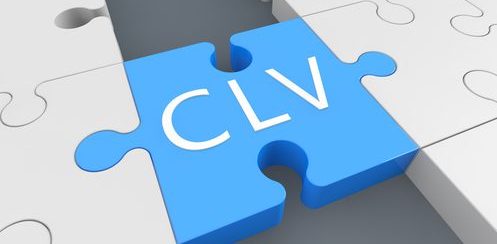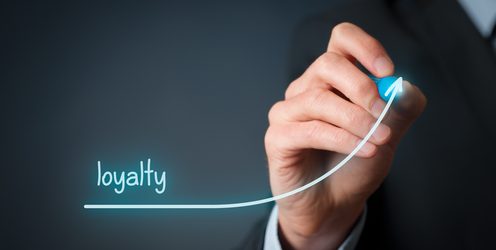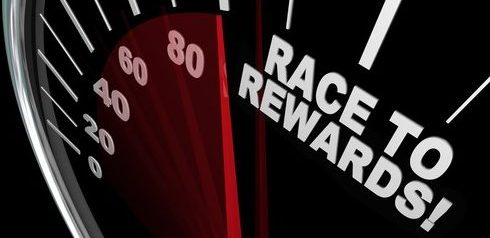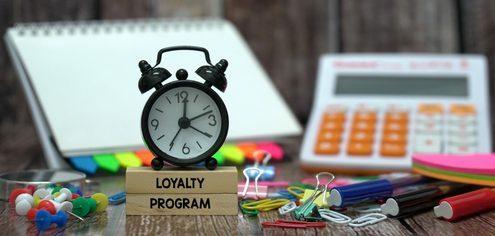Is your customer loyalty program successful? If your company offers discounts, promotional deals or free rewards, knowing if your loyalty program strategy is generating a return on its investment is paramount.
Imagine discovering your large promotional budget fails to attract or retain loyal customers. Not good; you’re in business to improve profitability, and, if you’re not getting measurable returns, your efforts are likely being lost.
Yet customer loyalty programs are clearly worth the investment, with loyal customers spending 67% more than new customers. They can not only generate significantly more revenue for your business, but play an equally important role in garnering brand loyalty.
The goals of any customer loyalty program strategy are clear:
Given these goals, how do you define and measure your success?
One way to measure your success is by surveying customer loyalty metrics or assessing customer behavior. Hosting customer surveys, tracking customer satisfaction, or calculating a net promoter score (NPS) can identify positive or negative feedback trends in customer loyalty.
Still, while these can be leading indicators for longer-term success, they don’t offer a clear financial gauge of your program’s impact, nor can they assess its profitability. In order to assess your program’s financial return, you need to focus on several key financial metrics.

It costs significantly more to acquire a new customer than it does to retain an existing customer. In fact, in some cases, it can be up to 25 times more expensive.
But what if we flipped this around?
An existing customer can be worth much more than a new customer.
Customer lifetime value (CLV) measures the profitability of an existing customer. A formula that can be used for many loyalty programs is as follows:

Consider each customer as an asset that could appreciate or depreciate over time. Some assets lose value as they age, requiring more cost to maintain an ever-decreasing output. Other assets, such as financial investments, generally increase in value over time. The goal of measuring CLV is to ensure your customers are increasing assets.
A good question to ask yourself is, “How much value are we creating, in exchange for what it’s costing us?”
Customer lifetime value can be used to categorize your customers into buyer personas as well, so you can focus on the highest CLV members. CLV can be further broken into customer future value and customer potential value to isolate and forecast future behaviors or potential outcomes.
If CLV increases with time, your program is moving in the right direction.

A well-defined customer loyalty program strategy is aimed at maximizing potential revenue from members. A clear indicator of customer loyalty success is customer retention rate (CRR).
For a given period of time:
Customer Retention Rate = (Ending Customers – New Customers) / Initial Customers x 100
Why is it easier to sell to existing customers than to gain new customers?
We all know how difficult it is to make new friends. As adults, our time is focused on work, errands, taxes, and staying healthy. We have barely enough time to enjoy ourselves. It’s no wonder it takes so much effort to enter a person’s life. You must find common ground, shared interests, and find time to connect in an ever-busier schedule.
In contrast, it’s relatively easy to call up an old friend to ask for advice or input on solving a problem. They are significantly easier to reach on the phone or meet in person.
Customer retention can be viewed the same way. It’s easier to contact an existing customer than reach a new one. Your existing customers have already supported your business in the past, and you have a better understanding of what brings them value and makes them happy as consumers.
The broader you grow your customer base, the better opportunity for future revenue growth. A successful loyalty program that fosters a positive customer experience will lead to higher customer retention rates.

While you may be increasing sign-up rates, are customers actually enjoying your program?
Coupons and rewards drive people to brands; calculating how often customers use your program’s rewards can provide insight into if they are actually taking advantage of your loyalty program. Incentivizing customer interactions will help increase the redemption rate.
Ultimate Redemption Rate = [Total loyalty points spent to date + Predicted future points that will be redeemed] / Number of points issued to date
It’s important to remember that customers are engaging not just with the benefits of your program, but with your brand. Active customers are a positive sign that you have designed a compelling incentive program. This also increases the likelihood of repeat customers. A successful loyalty program will have a strong ultimate redemption rate.
Note that a strong ultimate redemption rate is a positive sign of engagement, but it also means an increased cost to fulfill redemptions. The CLV metric discussed previously is critical to put the redemption cost in the appropriate context. If CLV is large and increasing, then the redemption cost is justified.

Ultimately, this leads us to measuring loyalty program return on investment (ROI). Your goal is to improve profitability through improving the customer experience, and loyalty program ROI measures the profitable return on your customer loyalty program investment.
Loyalty Program ROI = Value Generated / Investment
Value can result from:
Investments can include:
Unfortunately, there’s no way to exactly measure the value generated. The most direct way to capture it is the change in customer lifetime value over time.
However, as you extend your loyalty program, whether the incentive is free reward points or travel miles, you’re also creating a loyalty program liability. At some point in the future, a customer may cash in on those free perks and rewards, and if not properly accounted for, these redemptions can wreck financial havoc on your organization.
A clear quantification of loyalty program ROI will help convince your most cost conscious and risk averse colleagues to continue to invest in the program.
Many industries invest heavily in loyalty programs – airlines, credit cards, banks, and investment brokerages. All are very efficient and very competitive markets. Customer loyalty programs represent one key avenue to gain an edge on the competition
Ideally, acquiring new customers and converting them into loyal customers will lead to an increase in profitability for your organization. A successful loyalty program will improve your customer retention, engagement, and average customer value.
Measuring the success of these parameters doesn’t need to be an arbitrary or abstract process.
Apply quantitative financial metrics to assess your program’s performance. Identify where you stand now, track changes over time, and compare your metrics against industry benchmarks.
By designing a loyalty program strategy that focuses on these metrics, you’ll be well on your way to improving your customer’s experience and your company’s bottom line.
Where does your program stand?
Founder and managing partner of KYROS Insights. I'm an analytics nerd and recovering actuary. I use machine learning to help loyalty programs predict member behavior so they can identify their future best customers, and recognize and reward them today.
Comments